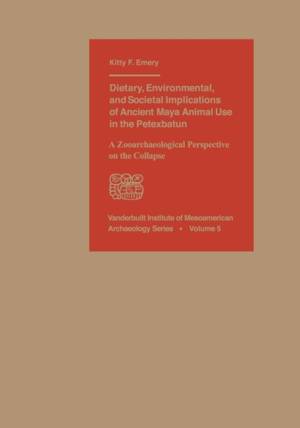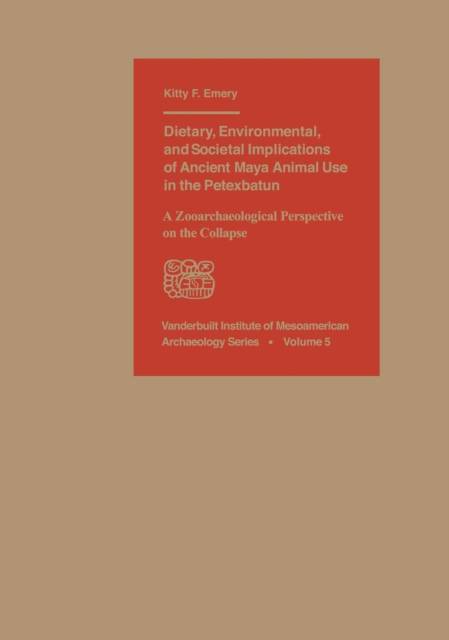
- Retrait gratuit dans votre magasin Club
- 7.000.000 titres dans notre catalogue
- Payer en toute sécurité
- Toujours un magasin près de chez vous
- Retrait gratuit dans votre magasin Club
- 7.000.0000 titres dans notre catalogue
- Payer en toute sécurité
- Toujours un magasin près de chez vous
Dietary, Environmental, and Societal Implications of Ancient Maya Animal Use in the Petexbatun
A Zooarchaeological Perspective on the Collapse
Kitty F EmeryDescription
The species found in the Petexbatun faunal collections are compared as proxy evidence for the ancient habitats and landscapes that would have existed around the sites. They reveal that the ancient landscape of the Petexbatun region was not significantly deforested or otherwise destroyed at the end of the Classic period. Bone chemistry of archaeological deer bones confirms that there was no significant expanse of agricultural fields at the expense of forested lands over the occupation of the region. The animal remains are next used to test a related model for the Maya collapse: dietary failure. Comparisons of the remains of food species from residential deposits indicate that the Petexbatun Maya were in no danger of famine or protein deficiency--hey neither overhunted their animal resources nor destroyed their habitats to the extent that dietary species were no longer available.
An intriguing deposit of worked animal bone from the capital city of Dos Pilas offers a clue to the puzzle. Here, following the abandonment of the site by the ruling elite, a family group manufactured quantities of utilitarian bone artifacts, probably for trade with other scattered communities in the region. This finding suggests the importance of re-evaluating socioeconomic causality for this transitional period in the Petexbatun and elsewhere in the southern Maya lowlands.
VIMA Series #5Spécifications
Parties prenantes
- Auteur(s) :
- Editeur:
Contenu
- Nombre de pages :
- 240
- Langue:
- Anglais
- Collection :
- Tome:
- n° 5
Caractéristiques
- EAN:
- 9780826516466
- Date de parution :
- 07-06-10
- Format:
- Livre relié
- Format numérique:
- Genaaid
- Dimensions :
- 197 mm x 272 mm
- Poids :
- 1301 g

Les avis
Nous publions uniquement les avis qui respectent les conditions requises. Consultez nos conditions pour les avis.






